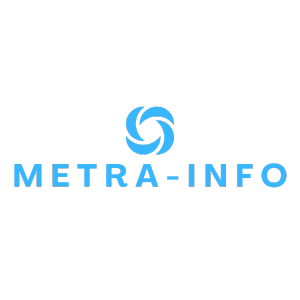Table of Contents
ToggleIn the fast-paced world of software development, container PaaS is the superhero no one knew they needed. Imagine effortlessly deploying applications without the hassle of managing infrastructure. It’s like having a personal assistant who not only remembers your coffee order but also ensures your code runs smoother than a buttered slide.
With container PaaS, developers can focus on what they do best—creating amazing applications—while the platform takes care of scaling, security, and everything in between. This isn’t just a trend; it’s a game-changer that’s transforming the way businesses operate. So buckle up, because diving into the world of container PaaS might just be the best decision for your development team.
Overview of Container PaaS
Container PaaS streamlines the application development process by providing an environment that automates deployment and management tasks. Developers can focus solely on writing code, as the platform takes care of infrastructure complexities. This model supports containers, which package applications and their dependencies into a single unit, promoting consistency across different computing environments.
Businesses benefit from quicker deployment times, allowing them to bring applications to market faster. According to recent surveys, companies adopting container PaaS often report a 30% reduction in development time. Enhanced scalability enables applications to adjust resources dynamically based on demand. Developers can allocate more instances during high traffic periods, ensuring optimal performance.
Security features integrated into container PaaS further enhance its appeal. These platforms often include built-in security measures that protect data and applications from potential threats. Developers can implement best practices effortlessly, knowing that the platform manages updates and patches.
Collaboration also improves with container PaaS. Teams can work simultaneously on different aspects of the application without stepping on each other’s toes. This leads to increased efficiency and a more cohesive workflow. Platforms like Google Kubernetes Engine and AWS Elastic Beanstalk are examples of services that provide robust container PaaS solutions.
Container PaaS serves as an essential tool for modern application development. Its advantages facilitate a more straightforward approach to building, deploying, and managing applications. The shift toward container PaaS represents a significant evolution in how developers think about software delivery.
Key Features of Container PaaS

Container PaaS offers several vital features that enhance software development and deployment processes.
Scalability
Scalability stands as a core feature of container PaaS. Businesses can seamlessly adjust resources to accommodate varying workloads, responding effectively to demand fluctuations. Many platforms allow automatic scaling, so applications can adapt without manual intervention. Resource allocation can increase or decrease based on real-time needs, minimizing downtime during peak usage. Developers observe improved performance, especially during traffic spikes. As a result, companies experience higher uptime and better user experiences. Reports show that organizations leveraging container PaaS achieve a 30% faster scaling response compared to traditional infrastructures.
Flexibility
Flexibility enhances the utility of container PaaS. Developers can choose from multiple programming languages and frameworks, catering to diverse project requirements. Containerization enables seamless migration of applications between different environments, making updates and changes easier. With this capability, teams can deploy applications across public, private, or hybrid clouds without compatibility issues. Additionally, container PaaS supports integration with various third-party tools, which streamlines workflows. Developers benefit from the ability to experiment and iterate quickly while maintaining application stability. This adaptability fuels innovation and accelerates development cycles significantly.
Popular Container PaaS Solutions
Container PaaS solutions offer powerful tools for streamlining application deployment. Here are two notable examples:
Kubernetes
Kubernetes stands out as an open-source container orchestration platform. This solution automates the deployment, scaling, and management of containerized applications. Organizations often prefer Kubernetes for its flexibility and robust community support. According to 2023 surveys, over 80% of companies using container technologies count on Kubernetes for production workloads. The platform facilitates service discovery, load balancing, and rolling updates, enhancing application efficiency. Additionally, Kubernetes integrates with various cloud services, providing a comprehensive ecosystem for developers.
OpenShift
OpenShift, developed by Red Hat, delivers a powerful container application platform built on Kubernetes. It enhances developer productivity through a user-friendly interface and built-in DevOps tools. OpenShift supports multiple programming languages and frameworks, allowing seamless development processes. Security features, including image scanning and role-based access control, protect applications effectively. As of 2023, reports indicate that organizations utilizing OpenShift see a 25% increase in deployment speed. This platform also simplifies scaling, making it easier for businesses to manage resource allocation as demands fluctuate.
Benefits of Using Container PaaS
Container PaaS offers substantial advantages that enhance software development and deployment. Organizations can leverage these benefits to boost productivity and streamline operations.
Cost Efficiency
Cost efficiency stands out as a primary benefit of using container PaaS. Companies reduce infrastructure expenses through its managed services. Many users report up to 40% savings on operational costs compared to traditional deployment methods. This efficiency stems from dynamic resource allocation, which scales resources based on demand, ensuring businesses pay only for what they use. Additionally, integrated security features lower the risk of costly breaches. By automating routine tasks, teams can reduce labor costs, allowing them to focus on higher-value initiatives while minimizing overall expenditures.
Simplified Development
Simplified development is another key advantage of container PaaS. Developers can concentrate on writing code instead of managing infrastructure. Automated deployment processes enable rapid iteration, with many organizations experiencing a 30% improvement in time-to-market. Containerization ensures consistent application behavior across different environments, reducing bugs and deployment issues. Teams can use various programming languages and frameworks, enhancing flexibility and creativity in their solutions. Integration with third-party tools further streamlines workflows, allowing for easy collaboration among team members and faster development cycles.
Challenges and Considerations
Container PaaS introduces several challenges that users must navigate. Security and vendor lock-in stand out as critical issues for organizations adopting this technology.
Security Concerns
Security remains a prominent concern when using container PaaS. Vulnerabilities in containers can expose applications and data to threats. Regular security assessments and the implementation of best practices increase overall security. Integrating automated security features enhances protection against breaches. Furthermore, a shared infrastructure in multi-tenant environments raises risks, as one compromised application can affect others. Organizations adopting container PaaS need to prioritize strong access controls and continuous monitoring to safeguard sensitive information.
Vendor Lock-In
Vendor lock-in presents a significant consideration in container PaaS. Switching providers can create challenges due to compatibility issues and proprietary technologies. Many businesses face difficulties migrating applications and data when vendors use unique interfaces or service models. Utilizing standardized solutions, such as Kubernetes, helps mitigate these risks, offering portability across different providers. Furthermore, keeping applications loosely coupled enables smoother transitions between platforms. Organizations should weigh the long-term implications of vendor relationships before fully committing to a specific container PaaS solution.
Container PaaS is transforming the landscape of application development by providing developers with the tools they need to innovate without the burden of infrastructure management. As businesses strive for efficiency and speed, adopting container PaaS solutions can lead to significant improvements in deployment times and cost savings.
With robust platforms like Kubernetes and OpenShift leading the charge, companies can harness the power of automation and scalability to enhance their development processes. While challenges like security and vendor lock-in exist, careful planning and the use of standardized technologies can help mitigate these risks. Embracing container PaaS is not just a trend but a strategic move towards a more agile and efficient future in software development.











